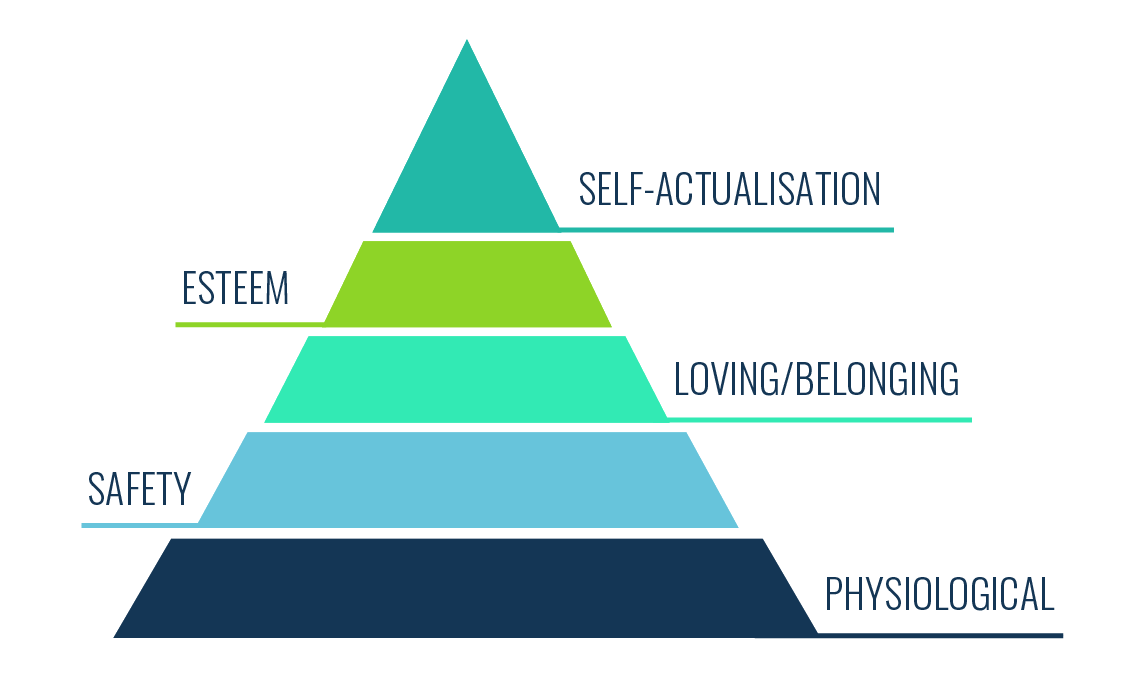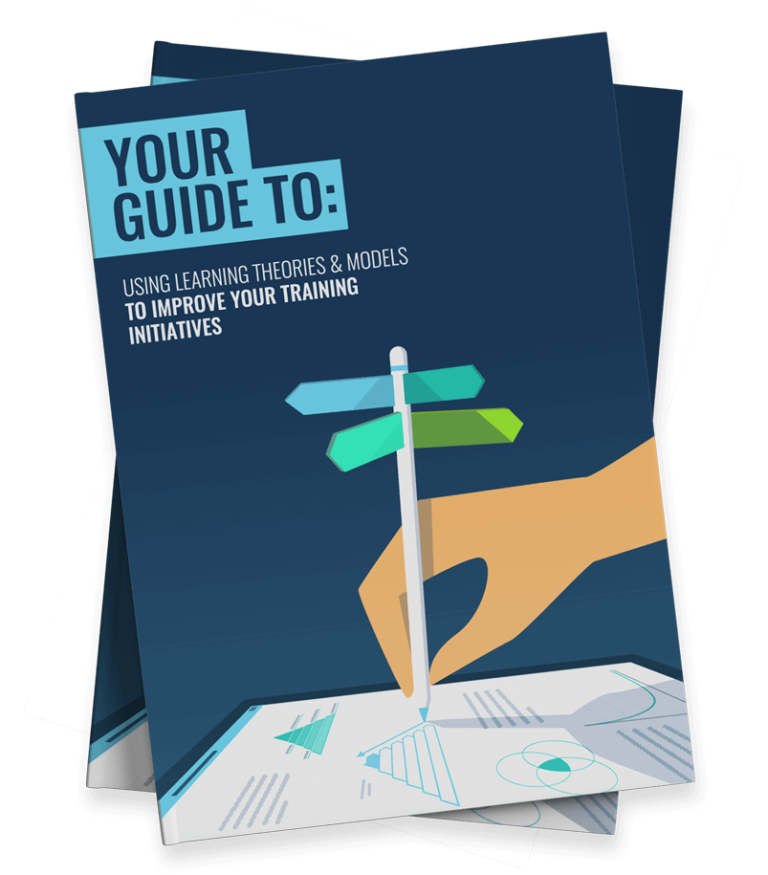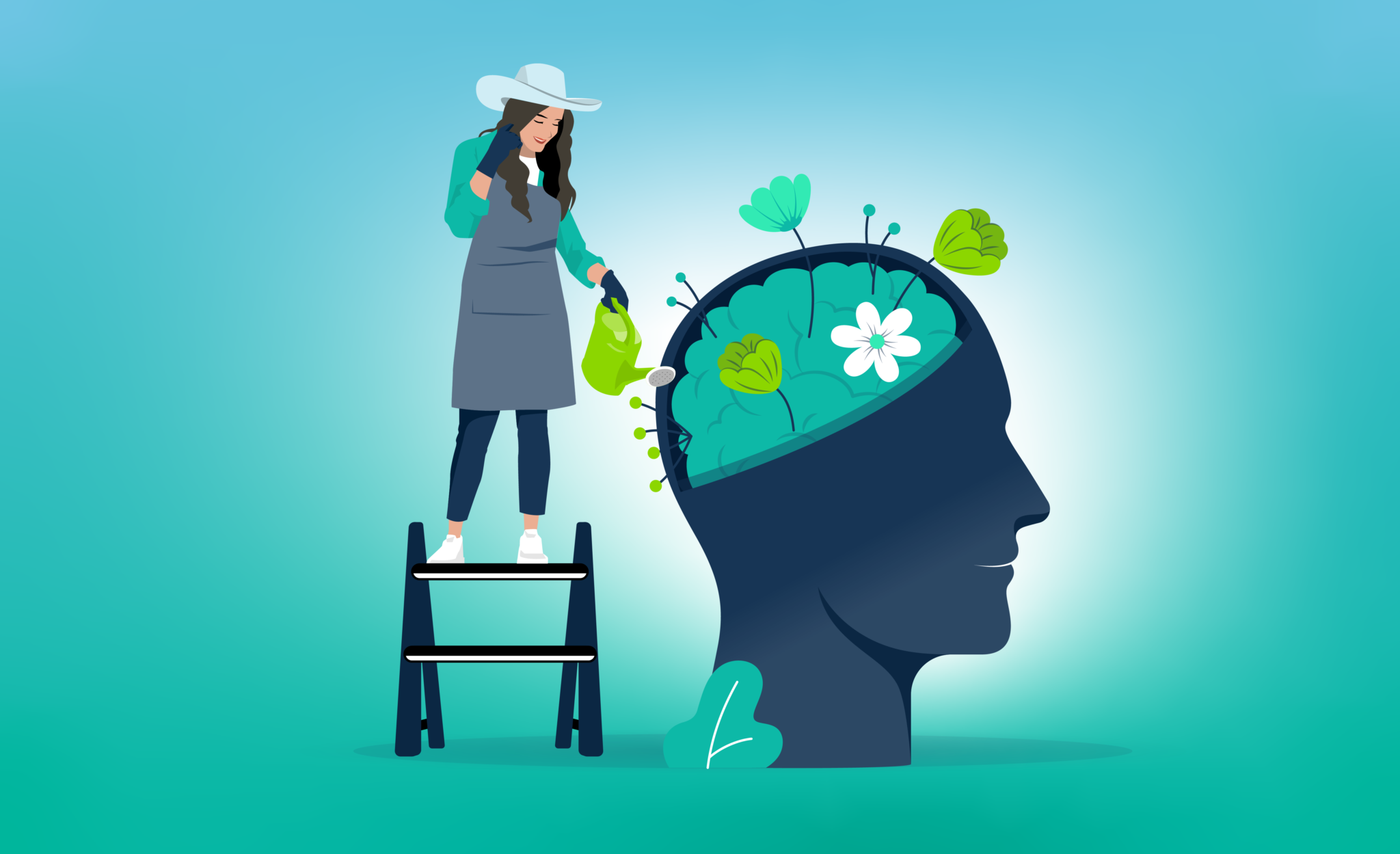
Have you ever felt disengaged by a learning experience that didn’t cater to your unique interests or goals?
You’re certainly not alone. Thankfully, humanistic learning theory offers a compelling alternative. This approach empowers learners to take an active role in shaping their educational journey.
Traditional educational often follows a one-size-fits-all approach, emphasizing rote memorisation and standardised testing. Yuck. While these methods can serve a purpose, they can also stifle a learner’s natural curiosity and intrinsic motivation.
Humanistic learning theory, on the other hand, places the learner’s individual growth and well-being at the centre of the learning experience. How refreshing!
In this article, we’ll explore the core principles of humanistic learning theory, its impact on the teacher-student dynamic, and the benefits and challenges that come with adopting this approach. Ready to self-actualise? Then let’s get started.
The History of Humanism
Humanistic psychology has origins as far back as the Middle Ages, when the philosophy of humanism was born in Italy. It later spread through continental Europe and England. Modern humanistic psychology emerged in the early 20th century.
Back then, psychology was dominated by two prominent schools of thought: behaviourism and psychoanalysis. While these theoretical approaches contributed to our understanding of human behaviour, they failed to provide a holistic view that accounts for our motivations, emotions and intentions.
Humanistic psychology emerged in response to this void. It differed from existing theories by focusing on the individual as a whole person. Unsurprisingly, humanists believe that humans are the starting point for understanding the world.
It recognises that we’re not simply acted upon by external forces, as behaviourism would suggest. We’re active agents with the ability to shape our own lives. Likewise, we all have desires and needs and seek self-fulfilment.
This philosophy started to gain traction in the second half of the 20th century. Various psychologists, including Abraham Maslow, published research and theories on the topic. In addition, the launch of the American Association for Humanistic Psychology helped humanism to spread into the L&D landscape.
What Is Humanistic Learning Theory?
Humanistic learning theory, rooted in the philosophy of humanism, transforms traditional education by placing the learner’s individual growth and well-being at the centre of the experience.
Abraham Maslow (1908-1970) is considered the foundational figure in humanistic psychology. He laid the groundwork with his Hierarchy of Needs. This model categorises and prioritises human needs within a five-tier model, often presented as a pyramid (although perhaps better understood as a waveform graph).

Maslow’s theory proposes that fulfilling basic needs like safety and security is essential before focusing on higher-order needs like self-actualisation (more on this shortly). This respect for our well-being and overall potential is central to humanistic learning theory.
Carl Rogers (1902-1987) was a fellow founding father of humanistic psychology. He believed in the importance of unconditional positive regard, creating a safe space for learners where they feel accepted for who they are and motivated to achieve their potential.
Humanistic learning theory distinguishes itself by placing the learner firmly in the driving seat. Unlike other approaches (except perhaps constructivism) that emphasize teacher-directed instruction, humanism champions freedom, choice and learner autonomy.
This means that your learners themselves determine their learning needs, methods and materials. Therefore, humanistic learning theory focuses on individuals’ potential instead of specific learning materials or courses
The Key Assumptions of Humanistic Learning Theory
According to humanistic psychology, people act with intentionality and values. This contrasts with behaviourism and cognitivism — theories that focus on observable behaviours and internal mental processes, rather than the intentions that underlie human actions.
Understanding this helps to shape the key assumptions related to humanistic learning theory. The theory can be summarised as follows:
- Learners can be trusted to find their own goals and should choose what they learn at school (and beyond).
- Learners should set their standards and evaluate their work and progress themselves.
- Learning experiences should help learners to develop positive relations with their peers.
All of these assumptions focus on or lead to self-actualisation. As a result, learner needs are met, and they are fulfilled in their learning experience. Let’s take a better look at the key concepts.
1. Self-Actualisation

Self-actualisation is the process of fulfilling one’s full potential and becoming the best version of yourself. For Maslow, once all other needs are satisfied, this is what we strive towards. Here’s how he put it:
“What a man can be, he must be. This need we may call self-actualisation.”
In other words, it’s not just about acquiring knowledge or skills, but about personal growth, developing talents, and living a meaningful life (a somewhat Aristotelian view). Learning is the means by which we can do this.
Understanding this holistic, purpose-driving learning approach is key to interpreting humanistic learning theory in general.
2. Idiographic Research

According to humanistic psychology, learners need to be considered as a ‘whole’. After all, all individuals are unique, and we grow, develop, and change over the years. Understanding the ‘why’ behind this process is key.
Similarly, humanistic psychology also emphasizes an idiographic approach. This means it focuses on understanding the unique experiences and motivations of each individual. This differs from approaches that seek to establish general laws about human behaviour.
3. Free Will

According to humanistic approaches all humans have free will. This means we are free to do and think whatever we want. Our behaviour isn’t all determined.
As a result, learners should be encouraged to take control of their education. They can use their free will to make decisions on what activities they complete, with what methods and when. This learner choice is central to humanistic learning theory and humanistic psychology.
4. Positive Emotions

Humanistic psychology proposes that knowledge and feelings go hand-in-hand in the learning process. Our emotions impact what, when and how we learn and should not be separated.
As such, learning activities need to focus on both the learner’s intellect and feelings, not one or the other.
In addition, humanistic psychology proposes that learners need to feel positive, relaxed and comfortable to achieve the best results. A positive emotional state will make them ready to learn.
5. Intrinsic Motivation

Individuals have an internal desire to self-actualise and become their best selves. As a result, our desire to learn is guided by intrinsic motivation rather than extrinsic motivation.
Intrinsic motivation means that learners have a genuine passion for whatever they are doing. As such, learners are motivated from within and are driven by their desire to achieve a genuine sense of fulfilment.
Humanistic educators focus on fostering engagement in order for learners to become self-motivated to further their development. After all, the effectiveness of humanistic learning is based on learners feeling engaged and intrinsically motivated to complete training.
6. Innate Goodness

Humanistic psychology argues that no individual is born with evil intentions. We all want the best for ourselves and for those close to us. In fact, according to the theory, we only do bad things if our fundamental needs are not fulfilled.
As a result, humanistic educators tend to see the good in their learners. Instead of providing negative feedback, they focus on determining what needs aren’t being met for their audience and make adjustments accordingly.
7. Self-Evaluation

According to humanistic learning theory, self-evaluation is the most meaningful way to evaluate how learners are progressing.
Self-evaluation ensures learners complete training material for their own satisfaction and excitement, compared to standard assessment approaches, which focus on achieving high grades or test results.
In other words, the theory suggests that rote memorisation and routine testing won’t lead to meaningful learning outcomes.
Humanistic Psychology In Education
Humanistic psychology places a different emphasis on education than other common theoretical approaches, like behaviourism. After all, the focus is on teaching your learners as a ‘whole’.
Similarly, to cater to self-actualisation, humanistic learning theory provides a unique approach to the roles of learners and educators:
Role of the Learner

According to humanistic psychology, education is an active process where learners engage with activities to acquire new knowledge.
While this is nothing new or revolutionary, the major theme of humanistic learning theory focuses on the learner being the source of authority. This means that your learners themselves determine what materials they use, how and when.
As such, they could choose to read, attend lectures, complete practical activities, or focus on more informal learning methods. These could involve online forum discussions and social media interaction.
On top of determining their desired materials, humanistic learning theory proposes that learners establish how much they need to learn about a specific topic or skill.
As a result, learners can only blame themselves if they do not acquire the skills they need or desire. This reinforces how the learner is the ultimate source of authority.
Role of the Educator

Whilst humanistic approaches emphasize learner autonomy, this doesn’t negate the need for an educator. It just changes the focus of their role.
In fact, according to humanistic learning theory, teachers or instructors adopt the role of a coach, mentor or facilitator. They assist their learners in establishing a strategy that helps them to achieve their training goals.
Educators are responsible for helping their learners understand the best ways to learn. They also provide motivation for learning tasks, as humanistic learning places great focus on engagement.
To be able to do so, educators must take notice of their learners’ unique needs. That way they can cater to each individual learner and find the best means of effective knowledge transfer. Creating a supportive and safe learning environment is essential.
Similarly, educators should focus on ensuring that learning experiences are related to real-life challenges and problems. As with Merrill’s First Principles of Instruction, this helps to provide opportunities for practical application and deeper understanding.
Strengths and Weaknesses of Humanistic Learning
All learning theories come with strengths and weaknesses, and humanistic learning theory is no exception.
Strengths
Using humanistic psychology in education can be beneficial for your learners. The strengths of this approach include:
- Positive Approach: Humanistic psychology sees the best in everyone and works hard to promote positivism. This is unique to this philosophy, as most other theories focus on identifying weaknesses.
- Inner Belief: Young people are seen as powerful and capable. Humanistic learning theory empowers them to find motivation within themselves.
- Emotional Impact: Unlike many other theories, humanistic learning theory considers learners’ emotional states, feelings, and intentions and how they impact learning.
- Holistic Learning: Similarly, humanistic psychology is a holistic approach that looks at all cognitive, social and emotional aspects of learning and development.
- Self-Fulfilment: Humanistic learning theory satisfies most individuals’ idea of what it means to be a human and autonomous, as it values self-fulfilment and personal ideals.
Weaknesses
Weaknesses, on the other hand, include:
- Lack of Structure: Humanistic psychology promotes learner authority and freedom. As a result, humanistic learning theory doesn’t follow a set curriculum, which runs contrary to most traditional training approaches.
- No Guidance: Due to this choice-based learning approach, humanistic learning theory is not beneficial for learners who desire structure and routine to learn effectively. Some of us need guidance to fuel our progress.
- Too Much Choice: Similarly, we aren’t always the best judge of what’s good for us. If left to my own devices, I’d probably rather eat chocolate cake than broccoli stems. Intrinsic motivation can sometimes lead us to distraction.
- Different Outcomes: With a humanistic learning approach, every learner will end up with different knowledge, because every individual has unique intrinsic desires and methods of gathering knowledge.
Research Into Humanistic Learning Theory
While measuring the effectiveness of humanistic learning can be challenging, a growing body of research supports the benefits of student-centred approaches aligned with humanistic principles. Here are some examples:
- A 2020 study demonstrates that when student-centred approaches are applied, the ‘creative thinking skills of students are positively affected.’
- This 2021 study shows that student-centred learning models ‘are better’ than teacher-centred learning models for promoting positive learning outcomes.
- Building on the holistic perspective of humanism, this 2023 study revealed that student-centred learning experiences have a ‘positive impact’ on students’ non-academic achievements, including personality development and social adaptability.
Humanistic Learning Theory and Online Learning
Both face-to-face and online learning typically adopt an instructor-led and more structured approach to training. After all, traditionally, learning follows a set structure, determined by the educator.
But humanistic learning has different demands. It requires a more flexible approach that allows learners to take control of the experience.
So, how can you take advantage of online learning while ensuring it suits your learners’ humanistic needs? Luckily, there are various strategies and tools you can apply that help you to cater to your learners.
Let’s have a look!
1. Provide Opportunities for Social Learning

Humanistic psychology encourages learners to develop positive relationships with their fellow learners. This makes sense. Humans are social animals by nature, and humanistic psychology aims to cater to individuals as a whole.
That’s why humanistic learning theory also emphasises social considerations on top of cognitive and emotional aspects. To cater to these needs, your humanistic training programme needs to provide opportunities for social interaction.
Social learning comes with vast benefits. Your learners can naturally gain and retain knowledge through interaction and collaboration. This unstructured approach is a perfect match for humanistic learning that emphasises learner choice.
These social interactions are not limited to face-to-face learning. Today’s modern learning technology solutions, like learning management systems, typically come with various social learning features.
For instance, Growth Engineering LMS offers a Live Chat and an Experts Area your learners can use to reach out to their peers or mentors at their own convenience. Similarly, social feeds provide a platform for your learners to connect and engage with each other.
2. Increase Engagement and Motivation

One of the key assumptions of humanistic learning theory is that learners have an internal desire to learn and improve their skills. As such, educators should focus on providing motivation and engagement that results in internal accomplishments.
Intrinsic motivation typically involves a sense of progress and competence, self-actualisation and pleasure. To cater to humanistic learners, your training programme must include features that help fuel these psychological needs.
While gamification is arguably more often linked to extrinsic motivation, you can also use game mechanics to generate intrinsic motivation in your learners. As such, it might just be the perfect tool for your humanistic online learning initiatives.
Gamification typically uses levels, badges, experience points (XP) and leaderboards. These features make it easier than ever for your learners to see their progress. This is essential for an approach that emphasises self-evaluation over formal assessments or grading.
After all, your learners can see how close they are to achieving their learning objectives and monitor progress against those goals. It’s powerfully motivating for your learners to see that, little by little, they are becoming the person they want to be.
3. Offer Content For All Training Needs

One of the key assumptions of humanistic learning theory focuses on individualism. People should be studied as individuals. They should also be provided with a vast array of learning opportunities to ensure they can take full authority over their learning.
Similarly, humanistic learning theory doesn’t believe in set curricula or structured learning. This means that your learning programme needs to cater to various learning needs as flexibly as possible.
The best way to do so is to offer various content types within your training library. After all, some may prefer learning through videos, podcasts or social media, while others like to read and complete gamified training units.
However, as most instructional designers and L&D professionals know, creating a library full of high-quality material is typically time-consuming and often expensive. But it doesn’t have to be!
Authoring tools, like Growth Engineering Authoring Tool, help you to make the process quicker and easier than before. You can, for instance, use templates or clone units to ensure your content remains high-quality and effective.
Final Words
Humanistic learning theory brings humanistic psychology to the world of education. Unlike other theories, it believes that learners have a free will and places great emphasis on our emotions and intentions.
Similarly, it repositions learners as the authority over their learning experiences. As such, your learners self-evaluate their needs, progress and learning outcomes. To do so effectively, they need to be intrinsically motivated to learn.
As a result, you now have a new focus. It’s up to you to empower your learners and motivate them in their journey of self-discovery. Good luck!
Thank you for reading. Humanistic Learning Theory is just one of many learning theories. Get the full breakdown in our extensive guidebook: ‘The Learning Theories & Models You Need to Know‘. Download it now, or explore the specific theories below:
- Behavioral Learning Theory
- Cognitive Learning Theory
- Constructivist Learning Theory
- Connectivism Learning Theory









